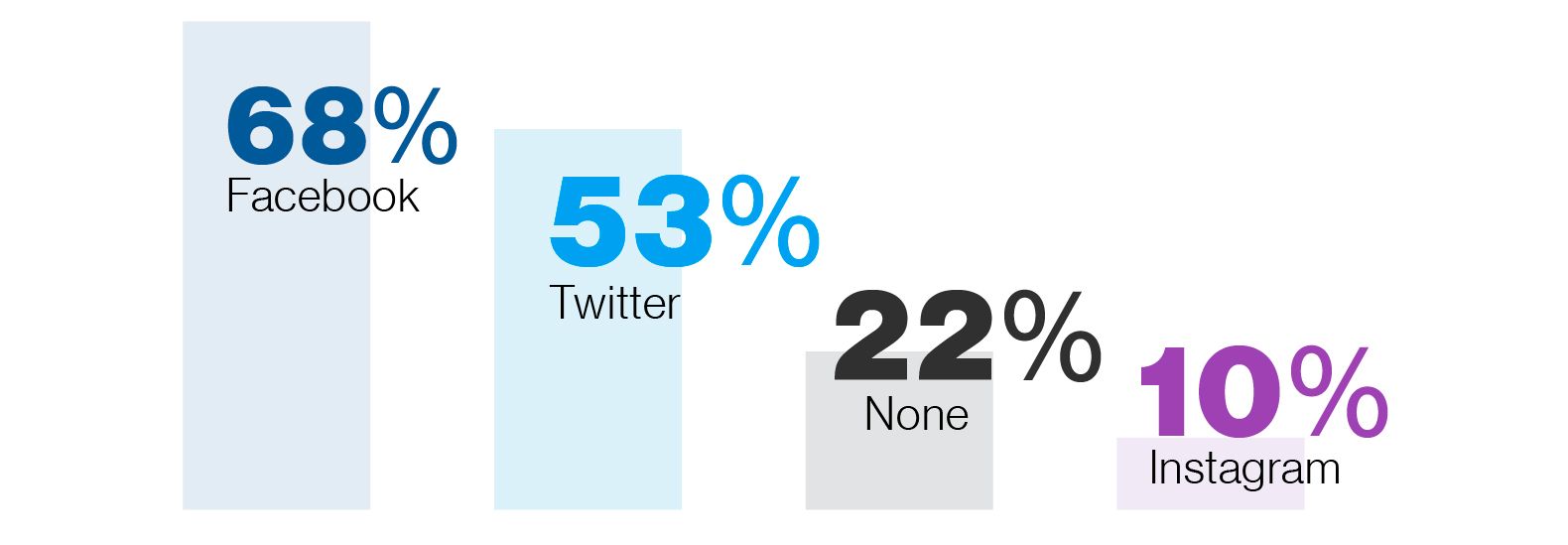Schools should step up their social media game. Here’s why, platform-by-platform.
Marketers in the private sector are leveraging social media platforms to their advantage; it’s one of the most affordable ways to engage with a large audience.

What is the difference between how social media is used in schools versus private sector companies?
To find out, we analyzed 1,000 school districts from across the country. After collecting data on the types of platforms each district used in 2017, we focused specifically on the ways they were using each platform: Where were they posting? When were they posting? What were they saying?
What we found is that industry-best social media practices that drive results in the private sector marketing world are not being applied in schools on social media. Luckily, there are a few basic adjustments that schools can make to their online presence to improve their social media marketing efforts. We’ll explain how you can fill those gaps, platform-by-platform, and show up on social the right way.
Percentage of Districts on Each Platform

Approximately 32% of schools didn't have a Facebook page in 2017. When you consider the number of adults — families, teachers, parents, and community members — who are logging onto Facebook everyday, it doesn’t add up that almost a third of schools aren’t using the second most popular social media platform on the planet (YouTube is no.1, used by 73% of U.S. adults).
The Pew Research Center reports that 68% of American adults are on Facebook, and three-quarters of them check the platform daily. But, despite Facebook being a great community building tool, our research shows there isn’t much interaction on the vast majority of school pages.
That all being said, schools still use Facebook more than any other social network. The company has even started to gear their networking site toward schools specifically; they’ve built page and group templates that are designed to meet the unique needs of educational organizations. Districts have an opportunity to utilize these resources not just for marketing, but as educational tools in the classroom.
School districts use Twitter less frequently than Facebook; only 53% of schools had a Twitter account. Twitter also has a significantly smaller overall audience base than Facebook. Pew reports that 24% of U.S. adults used Twitter in 2018, which is less than half of the adults using Facebook. With these numbers, Twitter may not seem as valuable as Facebook simply because there are fewer people logging on. However, the two platforms are used in fundamentally different ways. As we’ve seen in recent years (just think of the 2016 election), Twitter can be hugely important in shaping narratives and media coverage.
Journalists, politicians, and everyday community members are logging onto Twitter to post about trends and hot-button issues, especially as they relate to politics. Every member of the U.S. Senate and 98% of the House of Representatives has a Twitter account. A survey from Muck Rack, a journalism analytics company, shows that 70% of journalists actively use Twitter as well. Ignoring this platform means missing out on a critical networking and information space. It’s also fast, it’s succinct, and its content is easily and widely shareable. When rolling out new policies, sharing press releases, or thanking community volunteers, Twitter can become a high-value platform for professional communication.
Instagram ranks dead last in terms of school district's social media usage. Less than 10% of districts are on the platform. This is probably due to the fact that Instagram’s user demographics slant toward millennials and teenagers, while most schools are run by the young at heart and wealthy in age.
But, therein lies the problem. Schools are neglecting an app that is widely used by a younger demographic—your students, parents, and teachers. Pew finds that 64% of 18–29 year-olds are Instagram users. And a study by the Associated Press found that 76% of 13–17 year-olds are active users. All the while, Facebook usage is actually shrinking among these groups.
A successful tactic used by many technology companies in the private sector is to post about company culture as a recruiting tool. Instagram gives candidates a window into the workplace environment; companies celebrate their employees, show off their quirks, and highlight the best parts of the job. For schools, this is especially relevant because teachers are posting about their curriculum, their classrooms, and maybe even their new Jupiter-shaped earrings, all on “the Gram.” The fun, photo-sharing platform has also become an informal professional community, a great place for teachers to learn from one another. This creates an opportunity for schools to directly engage with the best teachers in their area.
It’s also important to note that parents who are about to enroll their five-year-olds in kindergarten are in the core demographic of Instagram users. So, posting about your most innovative teachers, spirit week, handwritten notes from students — anything that uniquely showcases the experience of working at and attending your school — can make a great first impression and earn your district the advocacy and support it needs to thrive.

SchoolCEO is free for K-12 school leaders. Subscribe below to stay connected with us!

